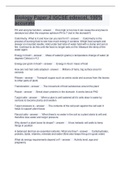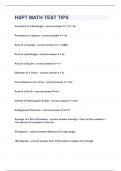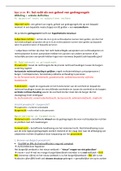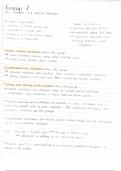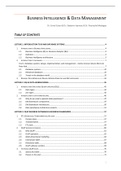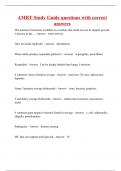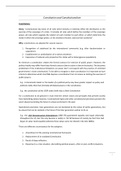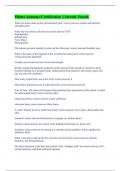E1 – Introduction to Emotion
Warm-up: How little we know about emotion
Everyone seems to know what emotions are, until you ask them to define it. However, we have
strong intuitive beliefs about emotions: specifically, the subjective experience of emotions is
what is accessible to us.
We use the movie “Inside Out” to illustrate common ideas and
misconceptions about emotions (we wish it was that easy). In
the movie, it all boils down to five basic emotions, which are
represented by homunculi in our brain that fight for control of
our behavior and mental state. Here, emotions play the major
role while reasoning and thinking go in the background.
Paul Ekman was the scientific supervisor for Inside Out: he came up with the notion of six basic
emotions through his research (i.e., anger, fear, disgust, happiness, sadness, surprise). Now we
go about analyzing the key ideas (and errors) of “Inside Out”.
Idea 1: There are a few basic emotions
Emotions are represented by little people living in your head which – when triggered by external stimuli – induce
certain responses.
This idea – captured by Basic Emotion Theories – is very influential. The general idea is that
there is a fixed and small set of distinct emotions (e.g., Big 5/6), corresponding to emotion
words in English. Overall, basic emotions are irreducible (like atoms: cannot be subdivided) and
distinct (they do not merge nor share components: represented by different characters in
Inside Out).
However, there are many proposed (and
arbitrary) classification schemes for basic
emotions.
Panksepp’s basic emotion theory is based
on electrical micro-stimulation of animal
brain areas. He (i.e., founder of Effective
Neuroscience) came up with his list of basic
1
emotions by micro-stimulating animals and
eliciting emotional behaviors.
, However, there is scant evidence for the existence of basic emotions:
Perhaps, “basic” emotions are made up of multiple (partly shared) components,
like molecules.
Why should scientific categories of emotion map on the (English) names we have
for them?
Different cultures have different emotion words (e.g., German “Schadenfreude”).
Open Question: How to taxonomize (organize) emotions?
How many emotions are there? How should we name them?
Are there different emotions in different cultures, or in different species?
Can we use the term “fear” to refer to the same type of emotion state in a person,
a dog, a rat, and even an octopus or worm?
How and when in evolution did emotions arise? How did they diversify?
Idea 2: Emotions are like reflexes
The emotion characters look at the world through the girl’s eyes and are triggered by some external stimuli.
What is a reflex?
If you knock the knee with a hammer, the patellar reflex is
elicited: sensory neurons register the tension of the muscle
and project it to the spinal cord, where there may or may not
be an interneuron. Here, the information is relayed to spinal
motor neurons, which become activated and cause the knee
to move.
This reflex is always the same and is mediated by a simple
(usually monosynaptic) pathway between sensory and motor neurons.
On the other hand, cognition is more complex. In this framework, emotions are in between
reflexes and cognition: they are less complex than cognition and more complex than reflexes.
Emotions are rigidly triggered by specific external stimuli
Emotion as reflexes would imply that specific stimuli trigger specific emotions, which are simple
and automatic. However, emotions are flexible: many different stimuli can elicit emotions,
depending on the context and on the person.
2
,For instance, a dog can elicit different emotions (e.g., happiness and fear) in different people.
Another influential idea sees emotions as decoupled reflexes: they are not rigidly linked to S-R
associations but are also regarded to be as flexible as cognition (i.e., internal states that afford a
flexible mapping from stimuli to behavior). In fact, the same stimulus does not always elicit the
same response (as it does for a reflex).
Idea 3: Emotions control our behavior
This idea implies that our behavior is controlled from the “inside out” by our emotions.
According to this idea, specific emotions cause fixed and specific behaviors (e.g., “I cry because I
feel sad” or “I run from the bear because I feel afraid”).
However, not everyone agrees. For instance, William James claims the opposite (e.g., “I feel
afraid because I run from the bear).
Open Question: What are the causal links between stimuli, emotions, and behaviors?
Do internal emotion states cause behavior? Do they merely accompany it? Are they
a consequence of behavior?
Could we identify emotions in the absence of behavior?
Idea 4: Emotions are localized to specific brain regions
The idea that different emotions are located in different brain regions assumes that there are
anatomically distinct modules in the brain. While there is some support coming from patients
with focal brain lesions and older neuroimaging studies, this idea is not supported by more
recent work.
Open Question: How are emotions processed in the brain?
Are there identifiable neural substrates that implement specific emotion states?
Or is any given emotion state produced in such a highly distributed manner that it
is impossible to assign a specific emotional function to any brain circuit?
As of now, idea #4 is not supported anymore: we usually find emotional activation (e.g., fear) at
the level of neural circuits, rather than at the level of individual brain areas.
3
, Idea 5: Emotions are conscious homunculi
According to this idea, since emotions are conscious experiences produced by the brain, they
must literally be found in the brain. However, conscious experience is a global (emergent)
property of a person, meaning that the mechanisms that produce it do not themselves have
that property.
The main problem with this idea is that it would lead to an indefinite series of homunculi. It is
an emergent property of the brain.
Open Question: Can we separate emotion states from their accompanying conscious
(subjective) experience?
Emotions and feelings are not the same thing*. Adolph and Anderson (2018)
distinguish between emotions as internal functional states vs conscious
experiences of emotions (feelings).
* Feelings refer to the conscious experience of emotions, often associated with a bodily change
(i.e., perception that something is happening in the body). Emotion is an internal functional
state.
Toward a Science of Emotion
When talking about emotion, there are many different words, types of data, and processes that
might all refer to the same thing or to different things (depending on the research at hand).
When measuring emotions as internal functional states, there are various
types of data. These include neuroscience measures, conscious experience,
behavioral observation, or psychophysiological (and endocrine) measures.
Each of these methods can be operationalized in various ways:
4


